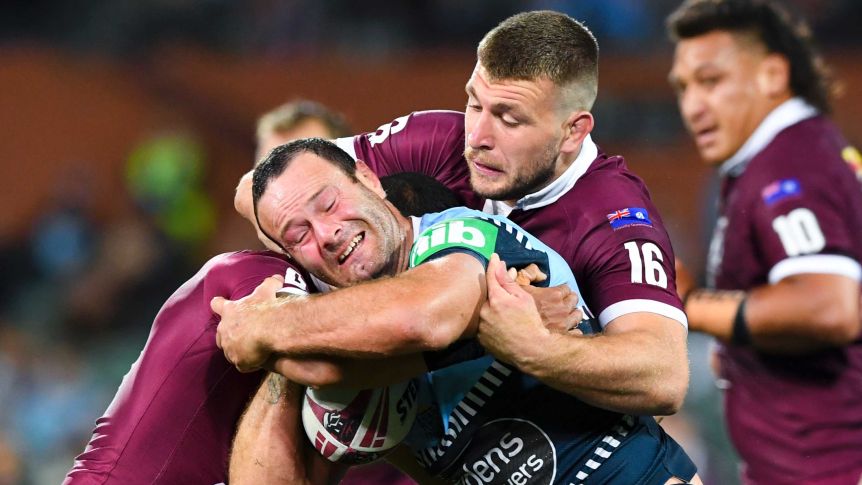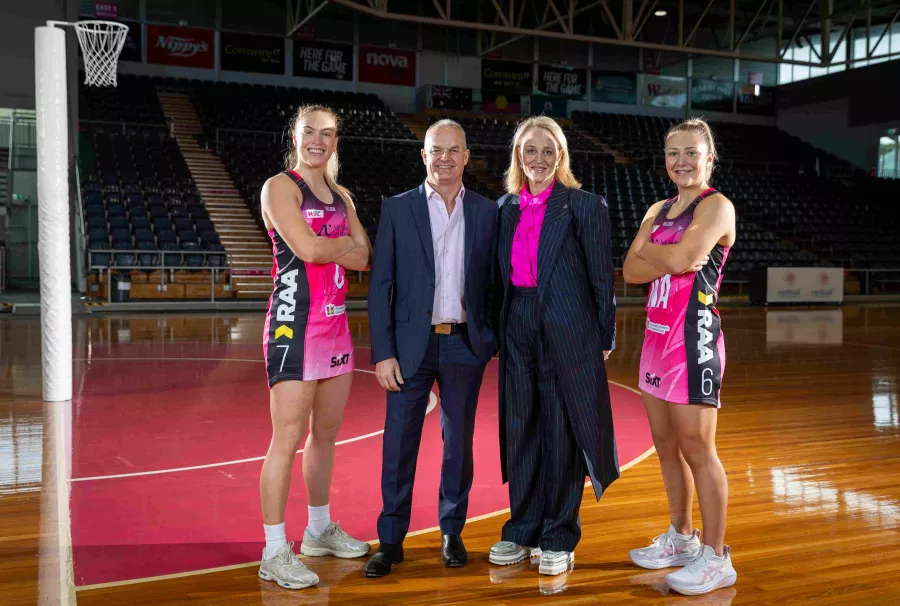[mkdf_dropcaps type=”normal” color=”#f55549″ background_color=””]T[/mkdf_dropcaps]
he NRL is launching an investigation into the NSW Blues’ medical staff’s decision to allow Boyd Cordner to return to the field during Game One of State of Origin after suffering an apparent head injury.
Cordner returned to the field just 15 minutes after being helped off the field “visibly wobbly” after receiving an incidental elbow to the head.
Cordner has an extensive history with head injuries and concussions throughout his career, and questions are now being asked as to why he was allowed back on the field, despite reportedly passing an immediate HIA (head injury assessment).
NSW team doctor, Nathan Gibbs, defended the choice to allow Cordner to return to the game, claiming he was unable to confirm a concussion diagnosis.
“Boyd (Cordner) had a head knock tackling when he caught the players’ elbow or hip and finished the tackle correctly and got up to get back in position but stumbled,” Gibbs said.
“This can be a sign of concussion, so he was brought off by the trainer immediately for a HIA.
“He passed his orientation questions immediately and passed his HIA with no problems so I couldn’t confirm a concussion diagnosis.
“He went back on and played the rest of the game running and tackling strongly without any problems and felt good after the game doing his post-match press conference with no issues and, checking him today, he is good too.
“So no definitive concussion diagnosis.
“But, certainly in the bigger picture, he is becoming prone to head knocks and HIA assessments more often, so this is more of the concern for him,” he said.
Veteran AFL player agent and consistent advocate for better protocols to manage athlete brain health and head injuries, Peter Jess, told Ministry of Sport the medical staff placed Cordner at risk by allowing him to return to play.
“I’ve always maintained that a HIA is not a fit-for-purpose test for return to play of any player, doesn’t matter what code, whether it be a SCAT-5 or HIA, they are not fit-for-purpose,” Jess told Ministry of Sport.
“Quite clearly, there are a number of underlying problems with the return to play protocols of the NRL.
“Quite simply, unless you have a multimodality of tests, you’re not going to be able to safely return to play until your brain has healed.
“It is impossible to have that outcome of Boyd Cordner, where he was clearly either severely concussed or disorientated to such an extent you would have concerns of his ability to function going forward into the game would be reasonable, and not be placing him at risk.
“They (the NRL) have a lot of history of not understanding the consequences of returning players to the game when their brain has been damaged.
“The simple fact is concussions are traumatic brain injuries, each one needs to be assessed, but when you have an accumulation of traumatic brain injuries, there’s no question that you are suffering from structural damage to your brain.
“We have to look at this from the long-term neurological impact that will flow and it’s not in the short term.
“What we are seeing is if you have structural damage, it is a pre-cursor to chronic traumatic encephalopathy (CTE).
“We know it exists in the NRL, we’ve had the autopsy on two or three players showing CTE exists in that cohort…
“There are clinical studies that tell us the window of vulnerability is 28-30 days when the brain is still dysfunctional, and you should not return to play in that period.
“My first recommendation which I’ve made to both the AFL and the concussion research group is that we should mandate the players; while they may present as asymptomatic, unless we can demonstrate that their brainwaves have returned to normal within the 28 days they should not return to play,” he said.
Australian Rugby League Commission (ARLC) chairman, Peter V’landys, told the Sydney Morning Herald the NRL will launch an inquiry into the incident.
“We will investigate it because we will never compromise on player welfare, it is paramount,” V’landys said.
“There is nothing that competes with it,” he said.
Ministry of Sport understands there is a Therapeutic Goods Administration (TGA) approved digital brain health tool aimed at making objective assessments based on scientifically-validated metrics in just minutes.
This tool is planning on targeting the Australian professional sporting market to improve brain injury assessments going forward.







